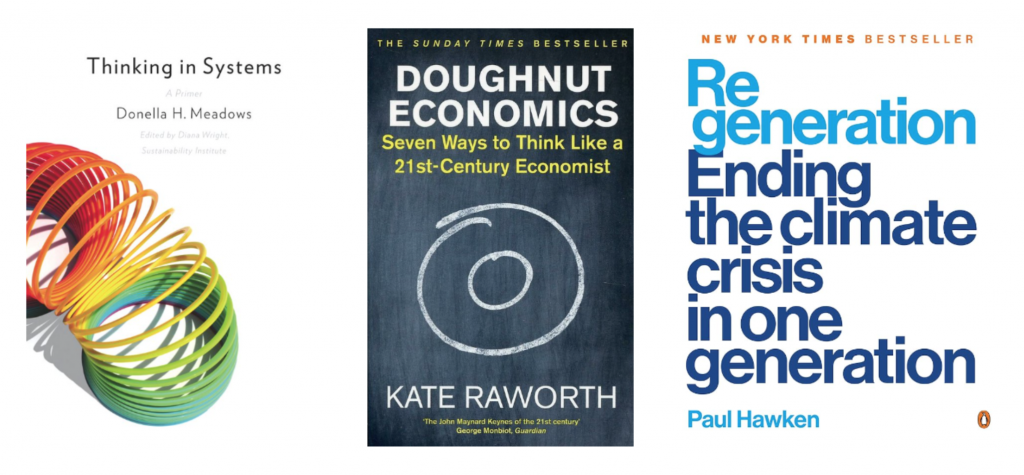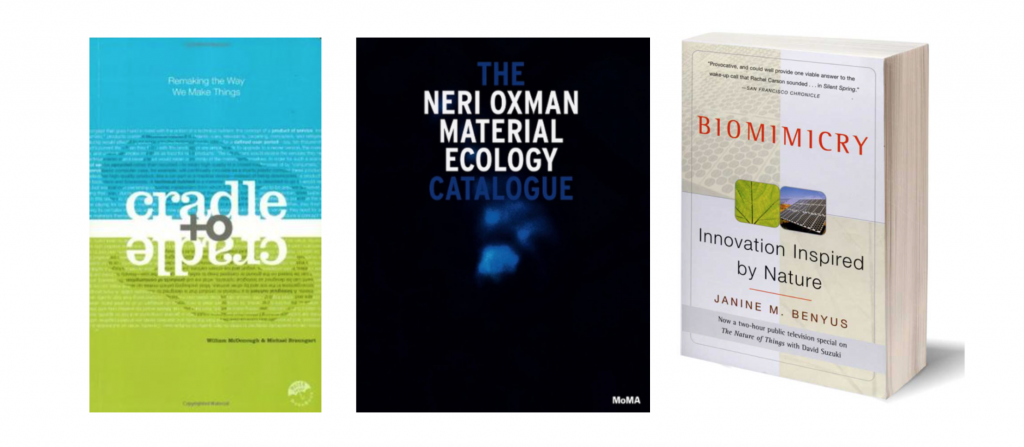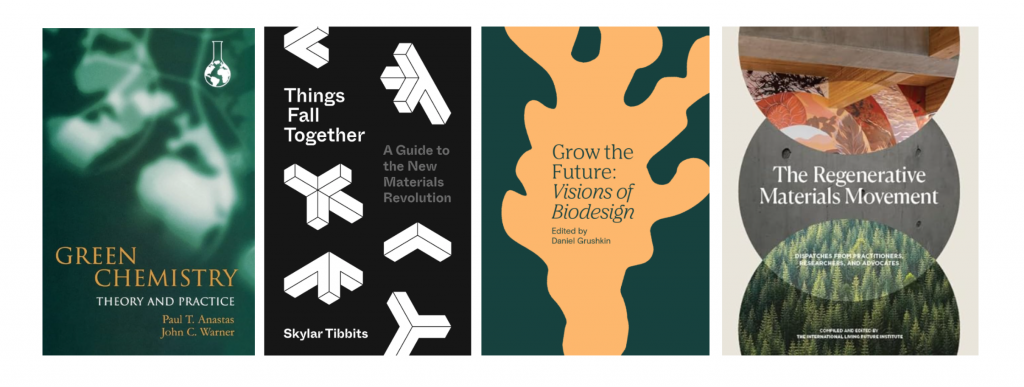
Materials touch just about every sector and system on our planet. These books draw on design, biology, chemistry, economics, systems thinking, engineering and more – offering fresh perspectives and inspiration for innovators looking to create new materials that can regenerate communities and ecosystems.
Staples from the Materiom bookshelf! Unpacking fundamental concepts behind regenerative systems thinking, these seminal reads are broader than just materials in scope. They offer what we think are essential foundations for anyone wanting to drive meaningful change.
1. Thinking in systems: A Primer | Donella Meadows
No material – or anything for that matter – can be regenerative in isolation. Its potential to regenerate very much depends on the system within which it exists. In this book, Meadows explains how we cannot fix one piece of the global sustainability puzzle in isolation of the others – an important lens for materials innovators, as materials cross-cut just about every global sector and system! Here it is.
2. Doughnut Economics: Seven Ways to Think Like a 21st-Century Economist | Kate Raworth
“Today’s economy is divisive and degenerative by default. Tomorrow’s economy must be distributive and regenerative by design.” Raworth argues (and we agree) that the principles guiding our current economic system are quite simply inadequate to tackle 21st century challenges. She explores seven key principles for a new economic paradigm. Our favourite? Create to regenerate. Learn more here.
3. Regeneration | Paul Hawken
Hawkens advocates for “putting life at the centre of every action and decision.” He explores regenerative solutions across a range of spheres – from food, agriculture, and energy, to land, forests and oceans – with materials inextricably intertwined. Regeneration is a rallying call to end the climate crisis, but extends much deeper than that to the fundamental link between human and planetary health. Find it here.

From biodesign to green chemistry, these books offer inspiring ways of thinking and practical advice for materials innovators.
4. Cradle to cradle: Remaking the way we make things | William McDonough, Michael Braungart
William McDonough’s philosophy around ‘good by design’ was an early source of inspiration for Materiom’s founders. Rather than seeking to do ‘less bad’, Cradle to Cradle reframes design as a positive, regenerative force, offering a nature-inspired design framework to spur a new kind of materials innovation. Learn more here.
5. Material Ecology | Neri Oxman
Architect, designer and inventor, Neri Oxman coined the term “material ecology” to describe a materials system informed by the structural, systemic and aesthetic wisdom of nature. Published by the Museum of Modern Art, her catalogue showcases both boundary-pushing materials and fabrication techniques in the field of organic design. Find it here.
6. Biomimicry: Innovation Inspired by Nature | Janine Benyus
Another early influencer during the shaping of Materiom, Janine Benyus explore’s nature’s ‘best ideas’ for the invention of materials, among other things. The book is not only full of inspiring examples of natural compounds that could revolutionise our materials palette, but grounded in a deep humility and awareness that views nature as our chief guide and architect in modern problem-solving. More here.

7. Things Fall Together: A Guide to the New Materials Revolution | Skylar Tibbits
From the founder of the self-assembly lab at MIT, this book explores a paradigm shift about what physical materials can do and how we can interact with them. Drawing on his work on self-assembly and programmable material technologies, Tibbits unpacks how matter can compute and exhibit behaviours that we typically associate with biological organisms. Through this lens, he explores the potential for simple and elegant material intelligence that could one day animate and improve itself, helping us build a more sustainable future. More here.
8. Grow the future: Visions of Biodesign | Daniel Grushkin
The Biodesign Challenge – an international education program cross-cutting biotechnology, art, and design – has released its first book. It’s a compilation of projects and ideas influencing the emerging field of biodesign, and its role in shaping people’s identities, cultures, and relationships with the living environment. Learn more here.
9. Green Chemistry: Theory and Practice | John Warner and Paul Anastas
The Principles of Green Chemistry are designed to help chemists make safe and sustainable choices for human and environmental health. For those hands-on in the field, this is a comprehensive textbook covering topics including alternative feedstocks, environmentally benign synthesis, the design of safer chemical products, new reaction conditions, alternative solvents and catalyst development, and the use of biosynthesis and biomimetic principles. It’s one of the first books ever written on the topic, providing foundational principles that are still very much in use today. Here it is.
10. The Regenerative Materials Movement | International Living Future Institute
Hot off the press (published September 2023), ILFI’s new book explores regenerative materials through the lens of the built environment. It unpacks three interconnected themes – justice & equity, health, and climate & environment – showing how “regenerative” materials not only make for healthier buildings and people, but also healthier natural environments, working conditions, job markets, and value chains. Find it here.
Got books to add to this list? We’d love to hear what you’re reading. Please drop us a mail on [email protected] with any suggestions!
